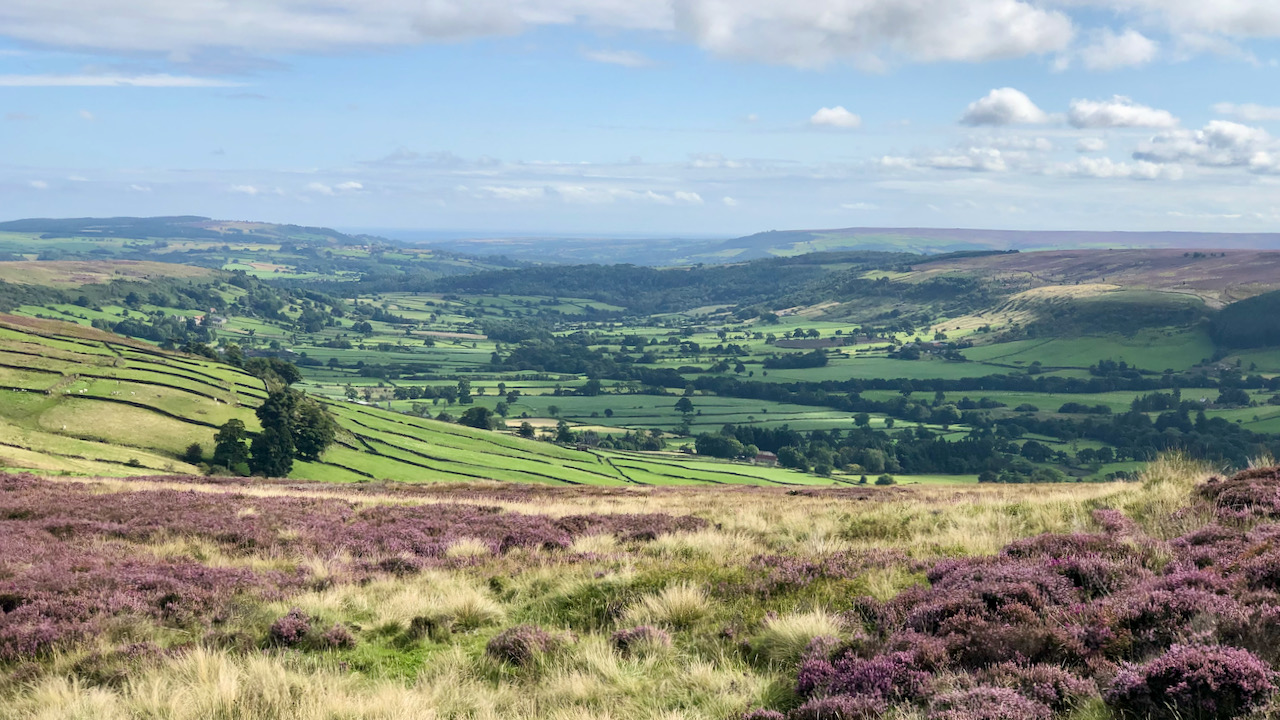Back in 1831, Glaisdale was a mere township within the parish of Danby. But, by the end of the century, Glaisdale was a parish in its own right1‘Parishes: Glaisdale | British History Online’. 2023. British-History.ac.uk <https://www.british-history.ac.uk/vch/yorks/north/vol2/pp348-351#p2> [accessed 28 August 2023]. The village, though, pretty much developed as a mining community, which began around the mid-1860s, and by the end of that decade an ironworks had been built.
So, in the mid-19th century it was thought the geology, including the iron-rich seams, was pretty much consistent all over this part of the North York Moors. So a shaft was sunk near the River Esk in Glaisdale to try to find those ironstone seams that were being mined from just below the surface over in Grosmont. And guess what? They did hit the jackpot, but it was a solid 70 metres down, so much more costly to extract2Wood, Paul. “Glaisdale Land of Iron.” Involved—Newsletter for North York Moors National Park Volunteers. Undated but before April 2020..
Two more mines were later opened higher up the dale in the 1870s, one on the west side at Postgate and the other on the east at Wintergill. These mines, though, were after ironstone from different seams than the shaft near the Esk.
Now, imagine transporting the stone from these two mines. Wintergill stone was carted away down the dale. But Postgate? Here the owners built a tramway, but chose not to take the easy low-level road to Glaisdale, a route which the modern road would follow. Instead, they built a tramway going uphill, and I’m guessing they used some steam engine to do the hauling. The tramway then went along Glaisdale Rigg, necessitating the construction of an embankment and cutting. Downhill it went towards Glaisdale, tunnelling under the village, and emerging on a trestle bridge over the River Esk, near to the ironworks. And word in the village was that the menfolk sipping pints at the Mitre pub could feel the ground shake as those carts rumbled below them.
Now, here’s where the story takes a plummet. All these operations were very short-lived. By 1876, the mines had closed, and so too the ironworks. Glaisdale’s mining bonanza was officially over, and the dale returned to a quiet rural life.
3Wood, Paul. “Glaisdale Land of Iron.” Involved—Newsletter for North York Moors National Park Volunteers. Undated but before April 2020.- 1‘Parishes: Glaisdale | British History Online’. 2023. British-History.ac.uk <https://www.british-history.ac.uk/vch/yorks/north/vol2/pp348-351#p2> [accessed 28 August 2023]
- 2Wood, Paul. “Glaisdale Land of Iron.” Involved—Newsletter for North York Moors National Park Volunteers. Undated but before April 2020.
- 3Wood, Paul. “Glaisdale Land of Iron.” Involved—Newsletter for North York Moors National Park Volunteers. Undated but before April 2020.

Leave a Reply